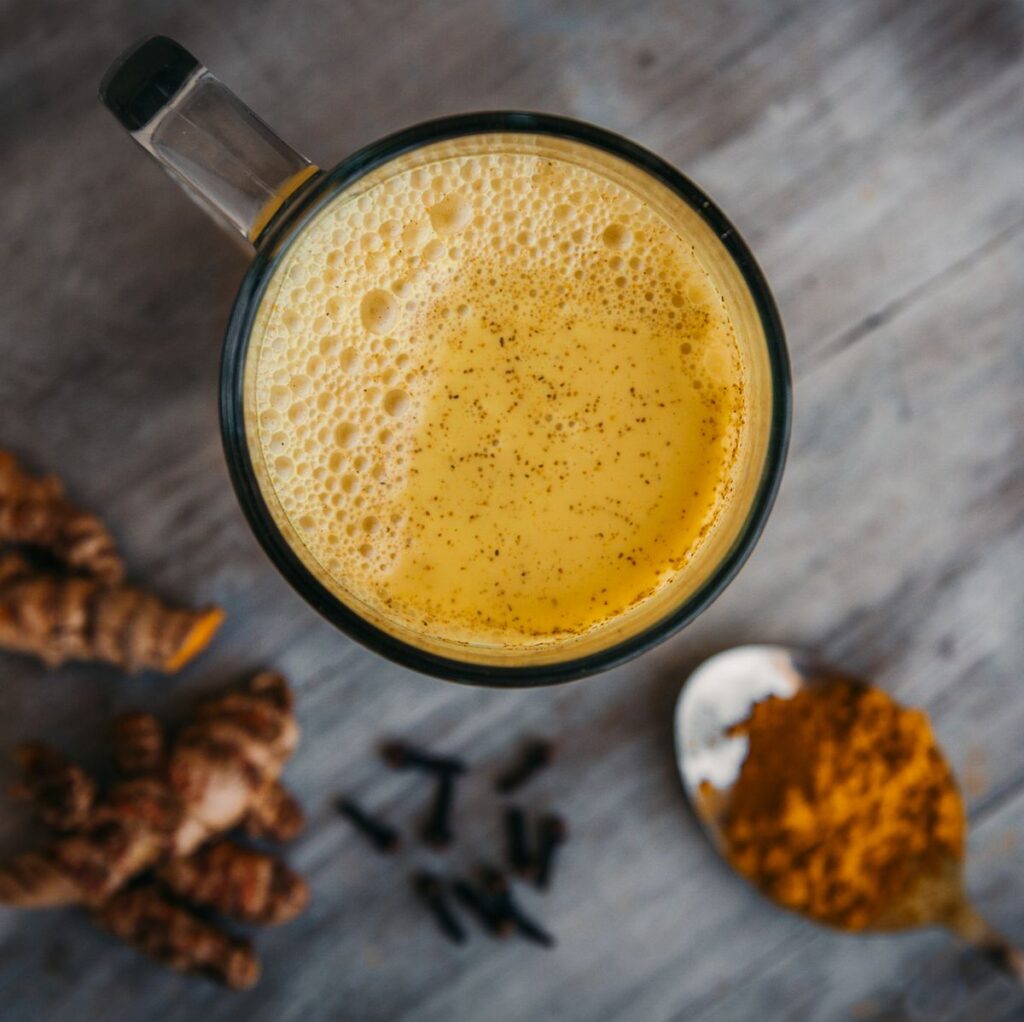New research highlights the anti-inflammatory benefits of the spice.

- A new study suggests that having a turmeric drink twice a day can reduce soreness faster after a workout, compared to not having regular sips of the spice.
- Turmeric’s active ingredient, curcumin, offers anti-inflammatory properties.
- You can also incorporate foods with similar anti-inflammatory effects into your diet to help with recovery.
Maximizing recovery time is the goal for anyone looking to boost performance and reduce injury risk, and new research in Frontiers in Nutrition suggests one strategy might be as close as your spice rack.
Researchers looked at 24 elite male soccer players who were divided into two groups: One consumed 60 millilitres of a drink containing turmeric twice daily, while the other did not. Each drink had 35 grams of raw turmeric root and 200 milligrams of black pepper—the latter contains a substance called piperine, which can increase the absorption rate of turmeric’s main beneficial compound, curcumin—and was consumed over the course of eight consecutive matches.
After collecting data on leg and whole-body soreness, along with bloodwork that showed inflammation levels, researchers found that those taking the turmeric shots returned to baseline levels of soreness and inflammation significantly faster than those in the control group.
Although the participant size for the pilot study was modest, these findings are in line with previous research showing the benefits of curcumin, said lead author Dave Clayton, Ph.D., senior lecturer in nutrition and exercise physiology at Nottingham Trent University in the U.K.
He told Runner’s World that curcumin is a polyphenol compound with antioxidant and anti-inflammatory properties and has been shown to down-regulate various inflammatory processes.
“The reduction we saw at about 64 hours post-match likely reflects a reduction in systematic inflammation, indicating that turmeric supplementation has attenuated exercise-induced inflammation,” he said. “Previous studies have also found that curcumin has reduced delayed onset muscle soreness after exercise, and we also saw that subjective muscle soreness was reduced with turmeric supplementation.”
One aspect of this study that’s unique is the use of elite soccer players, which is rare for this type of research, Clayton added. Looking at effects of supplementation for athletes at this level can be very informative due to how much stress they put on their bodies.
“Elite play elicits a high degree of muscle damage and soreness,” said Clayton. “That tends to result in many players using non-steroidal anti-inflammatory drugs, or NSAIDs, to manage pain and soreness as a way to stay on top of an intensive training and match schedule. However, chronic NSAID use has been associated with various adverse cardiovascular issues and regular use isn’t recommended. Having an alternative, like a turmeric shot, could have the same effects without the risks.”
If you’re not a fan of turmeric or find the idea of downing a couple shots of turmeric and pepper every day to be too much, the good news is that similar anti-inflammatory effects can be achieved by focusing on foods with those properties, said Madeline Meinhold, R.D., assistant professor in the department of nutrition at the University of North Carolina.
“An anti-inflammatory eating plan is going to be very diverse and colourful,” she told Runner’s World. “Foods that contain antioxidants, which are anti-inflammatory compounds, include foods such as fruits and vegetables, whole grains, fatty fish such as salmon, nuts and seeds, as well as spices like turmeric and ginger.”
Also, you don’t have to try and knock out all inflammation, she added. Especially after exercise, inflammation helps trigger the body to begin the repair process, so some is beneficial.
“The goal is not to entirely eliminate inflammation, but to moderate it,” said Meinhold. “Incorporating anti-inflammatory foods can be particularly helpful for reducing muscle soreness and allowing you to perform a little better in your next workout or training run as a result.”